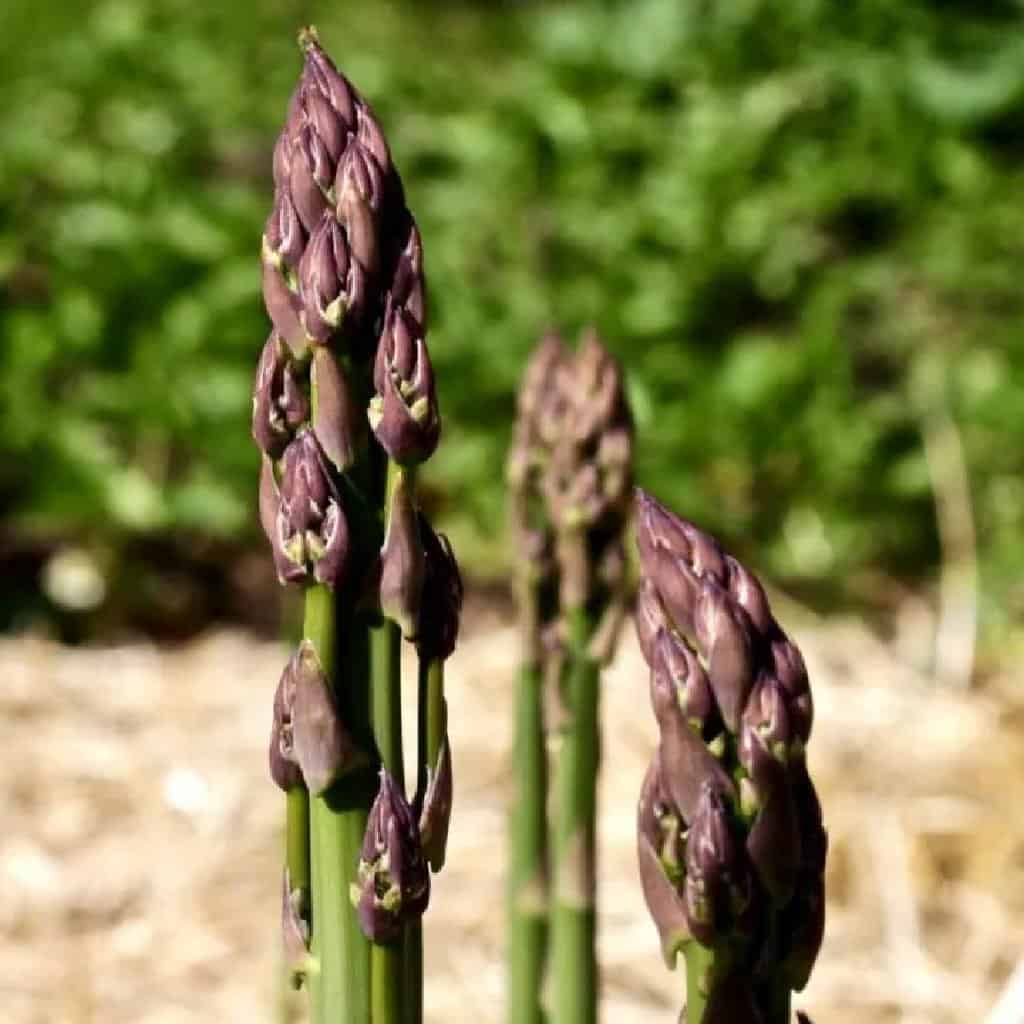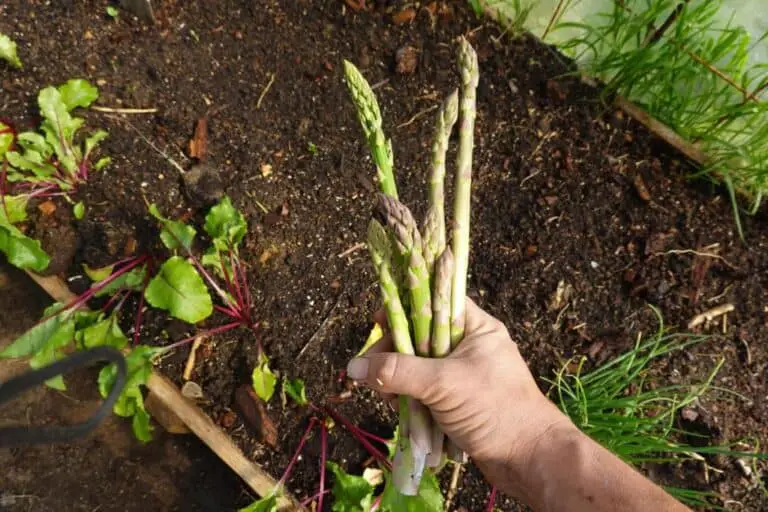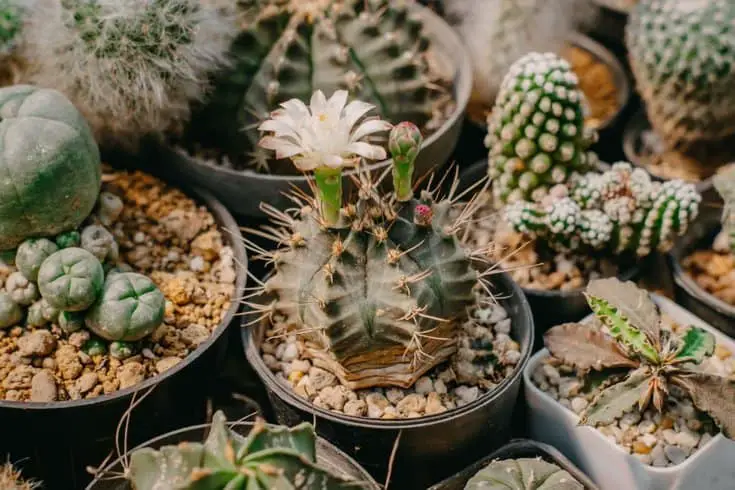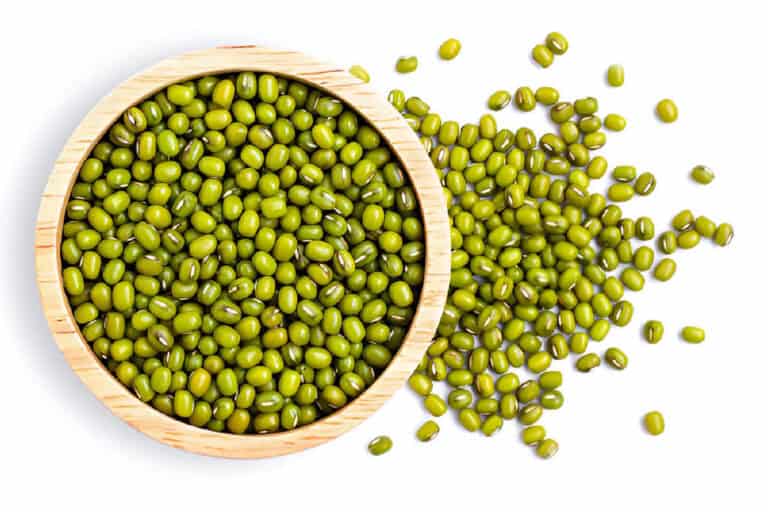Should You Let Asparagus Flower or Trim It?

Asparagus dilemma: To flower or to trim? Uncover the secrets to growing healthy asparagus plants and optimizing your yield. Read on!
Asparagus, with its tender spears and distinct flavor, has long been a beloved vegetable in the culinary world. But, did you know that asparagus also has a lovely flowering stage? Many home gardeners miss it.
The debate over whether to let asparagus flower or trim it back for harvest is a hot topic among gardening enthusiasts. Some swear by letting asparagus bloom. They believe it boosts the plant’s health and flavor. But, others argue that trimming is key for maximizing yield and quality.
So, should you let your asparagus reach its full floral potential or opt for a more pragmatic approach? Let’s delve into this age-old question and uncover the secrets behind cultivating the perfect asparagus crop.
The Benefits of Letting Asparagus Flower

Giving asparagus a chance to flower is good for both the garden and the person gardening. In the first place, letting your asparagus plants bloom brings many helpful bugs into your garden. Pollinators, like bees and butterflies, are drawn to these small flowers. This helps your asparagus crop and other plants nearby get more pollen. This increase in biodiversity can help make the garden environment stronger and better for plants to grow in.
Moreover, when you allow your asparagus to go to seed, you open the door to a sustainable cycle of growth. You can gather the seeds these flowers produce and use them to plant new crops in the future. By saving and using these seeds, you help preserve heirloom varieties. Or, you can develop unique types suited to your conditions. Saving seeds nurtures your garden. It also keeps old farming practices alive.
Lastly, there’s a visual delight that comes with letting your asparagus plants blossom. The elegant white or pale pink flowers that adorn the feathery foliage add a touch of ethereal beauty to your garden landscape. You may appreciate the beauty of nature. Or, you may want to make a pretty garden. Letting your asparagus flower can make your growing area more charming.
The Drawbacks of Allowing Asparagus to Flower
When opting to let asparagus flower, one key drawback is the potential diversion of energy away from fern growth and root development. Asparagus plants need much to flourish. When they make flowers and seeds, it can hurt the plant. This shift in focus may result in thinner or weaker spears, ultimately affecting future harvest yields. Gardeners aiming for strong asparagus crops may need to think about if allowing flowering fits their goals.
Another concern is letting asparagus go to seed. It can also cause more weeds. Asparagus seeds can spread and grow in many parts of the garden. They can lead to unwanted plants that compete for nutrients and space.
Without good management, like careful weeding or targeted harvesting before seed release, an asparagus patch could become a haven for invasive species. This would complicate maintenance efforts.
Also, some experts say that flowering itself may not offer big garden benefits. Flowering can attract pollinators and add to biodiversity. But, critics argue that other practices are more important. These include proper soil nutrition, watering, and pest control.
Should You Cut Asparagus When It Goes to Seed?
When asparagus plants go to seed, it’s generally advisable to stop harvesting the spears and allow the plant to mature fully. This is because when the plant produces seeds, it stops making edible spears and focuses on seed production. Allowing the spears to grow and develop into fern-like foliage helps the plant. It lets it photosynthesize and store energy for the next growing season.
Cutting asparagus spears when the plant is going to seed can weaken the plant and reduce its overall productivity in the long term. Letting the spears mature into ferns lets the plant rest. It can then store energy for next year’s harvest.
Also, letting some spears go to seed can promote self-seeding. This can lead to new asparagus plants in your garden.
It may be tempting to keep harvesting asparagus spears after the plant has begun to go to seed. But, it’s best to resist and let the plant finish its growth cycle. This ensures the continued health and vigor of the plant, ultimately leading to a more bountiful harvest in future seasons.
Should I Let My Asparagus Fern?
Allowing your asparagus ferns to mature fully before removing them is crucial for the plant’s health and productivity. The growing season is ending. The fern-like foliage of the asparagus plant is turning brown. This is due to a natural process called senescence. This change in color signals that the ferns have completed their growth cycle for the year and can be safely removed from the plant.
Ideally, you should wait until the ferns have turned completely brown before removing them.
This ensures that the plant has had sufficient time to absorb nutrients from the foliage and store them in its roots for the next growing season. Let the ferns remain on the plant until they are fully dormant. This keeps the plant healthy and strong, for a good harvest next year.
For the best timing, remove the dormant, brown ferns in late fall or early winter. This is usually between mid-November and December. Removing the ferns during this period lowers the risk of damaging the plant’s new growth. It also keeps it dormant all winter. This practice helps protect the plant from frost damage and prepares it for a strong start when the growing season resumes in the spring.
Read: How Many Asparagus Do You Get from One Plant?
When Should I Trim My Asparagus?
You should trim your asparagus in late winter or early spring, after the ferns have turned brown and died back. This is typically after the first frosts have hit, depending on your US hardiness zone.
Cut back the asparagus ferns to a height of around 4-6 inches and remove any old, yellowing, brown, or damaged foliage at the base of the plant. Cut back any spindly shoots that aren’t producing spears, and gently rake the soil to remove all the debris. This helps prevent disease and stops pests from overwintering in the bed
Do You Cut the Top off Asparagus?
Trimming the top off asparagus is not a mandatory step, but it can improve the eating experience, particularly for thicker stalks. Thinner spears may not need trimming. They tend to be tender throughout. But, the woody ends of larger stalks can be tough and fibrous. This detracts from their appeal.
For thicker asparagus stalks, removing the woody ends can enhance the texture and flavor of the spears. This can be done by gently snapping off the ends where they naturally break or by using a knife to trim them. By discarding the tough ends, you ensure that only the tender, succulent portion of the spear is consumed.
While some may find the trimming process to be an extra step, it can significantly improve the quality of the asparagus when cooked. By removing the woody ends, you create a more enjoyable dining experience, with tender, flavorful spears that are a pleasure to eat.
What Happens if You Don’t Trim Asparagus?
If you neglect to trim your asparagus, you risk losing a significant portion of the edible portion of the spears. When you snap off the ends of asparagus spears, you may end up discarding more of the vegetable than is necessary. Additionally, the spears may not have the same elegant appearance as they would if properly trimmed.
By snapping the spears at their natural breaking point, you may lose up to half of the weight of each spear. This means that a substantial portion of the asparagus, which could have been consumed, is wasted. Furthermore, the uneven edges resulting from snapping can affect the aesthetic appeal of the spears when served.
It takes time to trim and peel asparagus. This may require effort, but it makes for a more appealing dining experience. Properly trimmed spears look better. They also ensure that you make the most of your asparagus harvest. Trimming minimizes waste and maximizes flavor.
How Much and How Often Should I Trim My Asparagus?
The frequency and amount of trimming required for asparagus depend on the stage of growth and the specific needs of the plants. Generally, trim asparagus often. Do this to keep them healthy and productive.
During early growth, it’s essential to trim any emerging spears. This helps encourage the growth of strong, healthy plants. As the season goes on, keep trimming the spears as they mature. Harvest them promptly to stop them from becoming tough and fibrous.
Additionally, once the growing season has ended, it’s crucial to trim back the fern-like foliage of the asparagus plants. Trimming the ferns helps the plants save energy. It also prepares them for the coming winter. This promotes their health and vigor.
The frequency of trimming asparagus will vary. It depends on factors like weather, plant growth, and harvest schedules. However, regular and attentive trimming in the growing season is key. It ensures a good harvest and keeps your asparagus plants healthy.






